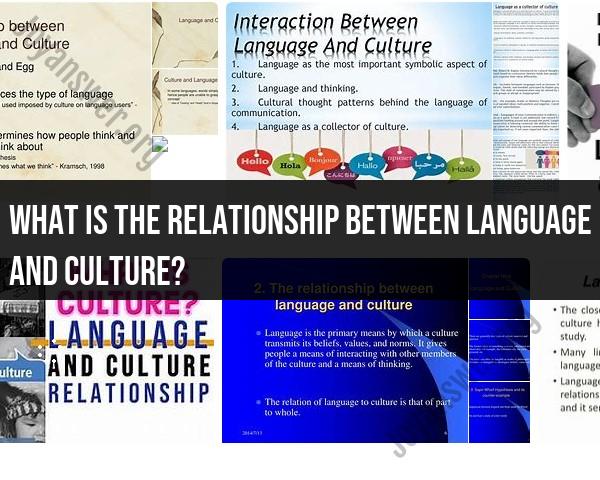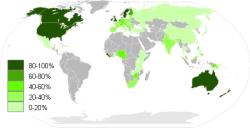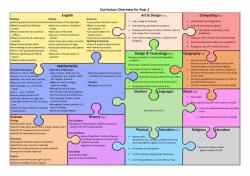What is the relationship between language and culture?
The relationship between language and culture is one of mutual shaping, meaning that they influence and shape each other in various ways. Language and culture are deeply interconnected, and each plays a significant role in influencing the other. Here are some key aspects of their mutual shaping relationship:
Language Reflects Culture:
- Language reflects the values, beliefs, and social norms of a culture. The vocabulary, grammar, and expressions in a language often contain elements that provide insights into the culture from which it originates.
- Different languages may have specific words or concepts that are unique to their respective cultures, highlighting the importance of certain ideas or aspects of life.
Language as a Tool for Communication:
- Language is the primary means of communication within a culture. It allows individuals to express thoughts, share knowledge, and convey emotions. The structure and richness of a language can influence how effectively culture is communicated.
Language Shapes Thought and Perception:
- Language can shape how people think and perceive the world around them. Different languages may categorize and structure experiences and concepts differently, leading to variations in cognitive processes and worldviews.
Language Maintains Cultural Identity:
- Language is often a key component of cultural identity. The preservation and use of a particular language can be integral to the continuity and cohesion of a cultural group.
Language and Social Norms:
- Language can reinforce or challenge social norms and hierarchies within a culture. The use of formal and informal language, honorifics, and titles can reflect and reinforce societal hierarchies.
Language and Cultural Expressions:
- Cultural expressions, such as literature, art, music, and rituals, are often closely tied to the language of a culture. The nuances of language are critical for conveying the subtleties of cultural expressions.
Language Evolution:
- Cultures change over time, and so do languages. As cultures evolve, their languages adapt to reflect these changes, incorporating new words and expressions to address emerging concepts and realities.
Language and Globalization:
- In an increasingly interconnected world, the mutual shaping of language and culture is further complicated by globalization. The influence of global languages, like English, can lead to the diffusion of cultural elements across borders.
Language Loss and Cultural Erosion:
- When a language declines or becomes extinct, it often signifies a loss of cultural knowledge, traditions, and identity. Efforts to preserve endangered languages are tied to cultural preservation.
In summary, the relationship between language and culture is dynamic and multifaceted. They are mutually influential, with language reflecting and transmitting cultural values and norms while also shaping how people think and interact within their cultural context. Understanding this relationship is essential for appreciating the diversity of human cultures and the role language plays in preserving and expressing them.
The Interplay Between Language and Culture
Language and culture are inextricably linked. Language is a tool that we use to communicate and express ourselves, and it is also a reflection of our cultural values and norms. Culture shapes how we use language, and language shapes how we perceive and understand the world around us.
For example, the way that we greet each other varies from culture to culture. In some cultures, it is customary to shake hands, while in others it is customary to bow or kiss on the cheek. These different greetings reflect the different cultural values and norms of each society.
Language also plays a role in shaping our cultural identity. We identify with the language that we speak, and we often use it to express our cultural heritage. For example, people who speak Spanish may identify as Hispanic or Latino, and people who speak Chinese may identify as Chinese.
Language as a Reflection of Cultural Values and Norms
Language is a reflection of cultural values and norms in a number of ways. For example, the words that we use to describe certain things can reveal a lot about our cultural values. For example, in some cultures, the word "family" is very important, and it is used to refer to a wide range of people, including extended family and close friends. In other cultures, the word "family" is more narrowly defined, and it typically refers to only immediate family members.
Language can also be used to express cultural norms. For example, in some cultures, it is considered rude to make eye contact with elders. In other cultures, it is considered rude to avoid eye contact.
How Language Shapes Cultural Identity and Communication
Language plays a key role in shaping our cultural identity and communication. We use language to express our thoughts, feelings, and beliefs. We also use language to connect with other people and to build relationships.
Language can also be used to exclude or marginalize certain groups of people. For example, if someone is not fluent in the language of the dominant culture, they may have difficulty communicating with others and participating fully in society.
Cultural Influence on Language Evolution and Expression
Culture has a significant influence on language evolution and expression. For example, new words and phrases are often created to reflect new cultural developments. For example, the word "selfie" was created to describe the new phenomenon of people taking pictures of themselves and posting them online.
Culture also influences how we use language in different contexts. For example, in some cultures, it is considered rude to use informal language when speaking to elders. In other cultures, it is considered more important to be direct and honest in communication, even if it means using informal language.
Cultural Competence and the Role of Language in Global Interactions
Cultural competence is the ability to understand and appreciate different cultures. It is an important skill for anyone who interacts with people from different cultures, including in a globalized world.
Language plays a key role in cultural competence. By learning about the language of a culture, we can gain insights into their values, norms, and communication styles. This can help us to avoid misunderstandings and to build more effective relationships.
Here are some tips for using language effectively in global interactions:
- Be mindful of the cultural context. Consider the audience that you are speaking to and the cultural norms that apply.
- Be respectful of different language accents and dialects.
- Avoid using slang or jargon that may not be understood by your audience.
- Be aware of the different meanings that words can have in different cultures.
- Be patient and understanding. It may take some time to build rapport with people from different cultures.
By following these tips, you can use language to build bridges and to create a more inclusive and welcoming world for everyone.













